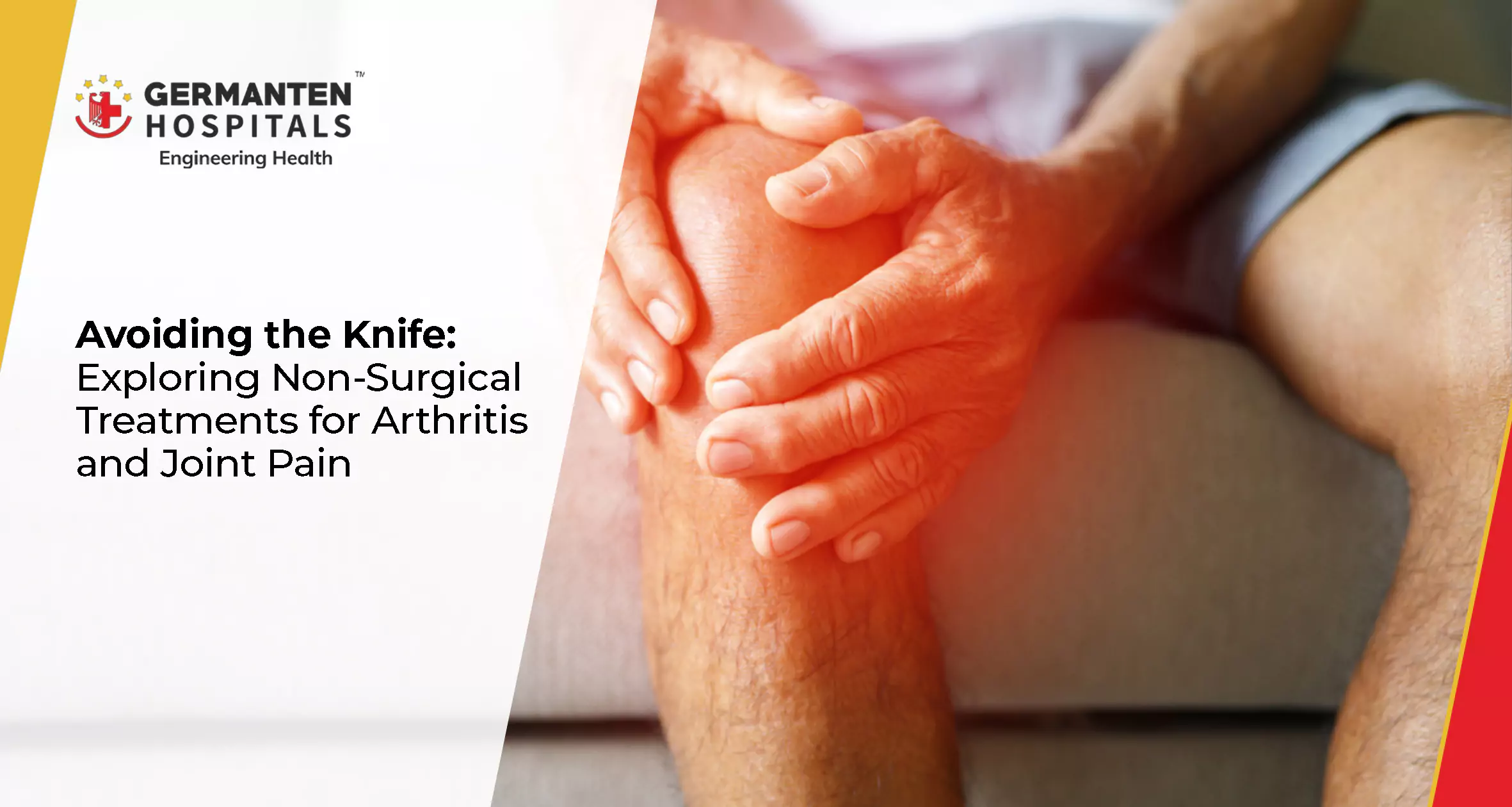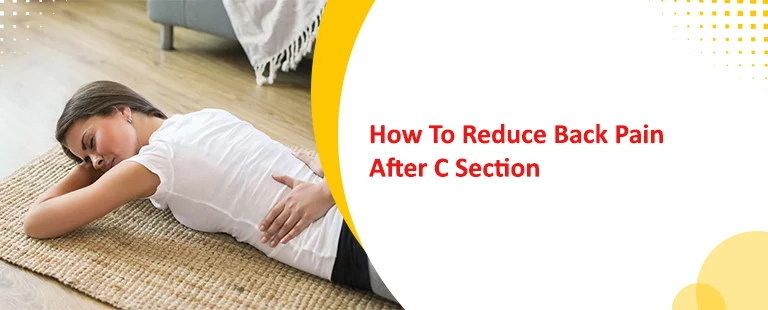Living with the chronic pain of arthritis can feel like a daily battle. The stiffness, swelling, and persistent ache in your joints can make you feel older than your years and force you to give up activities you once loved. For many, the eventual recommendation of joint replacement surgery feels inevitable, a daunting prospect involving significant recovery time and the risks inherent in any major operation.
But what if there was another way? What if you could harness your body's own healing power to reduce pain, improve function, and potentially delay or even avoid surgery altogether?
At Germanten Hospital, we are at the forefront of regenerative medicine, a revolutionary field of orthopedics focused on just that. We offer advanced, non-surgical treatments that are changing the way we manage arthritis and joint pain. This guide will explore two of the most powerful and promising non-surgical options available today: Platelet-Rich Plasma (PRP) Therapy and Stem Cell Therapy.
The Limits of Traditional Arthritis Management
For decades, the standard approach to managing arthritis has focused on controlling symptoms. This typically involves:
- Pain Medications: Over-the-counter and prescription anti-inflammatory drugs (NSAIDs) can reduce pain but don't heal the underlying damage and can have side effects with long-term use.
- Corticosteroid Injections: These can provide powerful, temporary relief from inflammation but cannot be used frequently and do not repair cartilage.
- Hyaluronic Acid Injections: Sometimes called "gel shots," these aim to lubricate the joint but offer temporary relief and don't work for everyone.
- Physical Therapy: While essential for maintaining strength and flexibility, physical therapy cannot reverse cartilage damage.
Platelet-Rich Plasma (PRP) Therapy: Supercharging Your Body's Natural Healing
Your blood contains incredible healing components, most notably platelets. While known for their role in clotting, platelets are also packed with hundreds of powerful proteins called growth factors. When you are injured, platelets rush to the site to initiate the repair process. PRP therapy harnesses this natural ability and concentrates it to create a powerful healing solution.
How PRP Therapy Works: The procedure is simple, safe, and performed right in our clinic.
- Blood Draw: A small sample of your own blood is drawn, similar to a routine blood test.
- Centrifugation: The blood is placed in a centrifuge, a machine that spins at high speed to separate the blood components. This process isolates and concentrates the platelets in a small amount of plasma.
- Injection: This "platelet-rich plasma" is then carefully injected directly into your painful joint under image guidance to ensure precise placement.
The Benefits of PRP for Arthritis: Once injected, the concentrated growth factors go to work, potentially leading to:
- Reduced Inflammation: The growth factors modulate the inflammatory environment within the joint, providing pain relief.
- Stimulated Tissue Repair: They send signals to your body's local repair cells, encouraging the healing of damaged cartilage and other tissues.
- Slowing Disease Progression: By improving the health of the joint environment, PRP may help to slow down the degenerative process of arthritis.
Because PRP uses your own blood, the risk of allergic reaction or infection is extremely low, making it a very safe treatment option. It is commonly used for osteoarthritis of the knee, hip, and shoulder, as well as for chronic tendon injuries like tennis elbow.
Stem Cell Therapy: The Future of Joint Regeneration
Stem cell therapy represents one of the most exciting frontiers in orthopedic medicine. Stem cells are your body's "master cells"—unique, undifferentiated cells that have the remarkable ability to develop into many different types of specialized cells, including cartilage cells.
For arthritis treatment, we use adult stem cells, which are typically harvested from your own bone marrow or adipose (fat) tissue. This is a safe and well-established practice that avoids the ethical concerns associated with other types of stem cells.
How Stem Cell Therapy Works: The procedure is minimally invasive and focuses on delivering a powerful regenerative payload directly to the damaged joint.
- Harvesting: A sample of bone marrow is typically taken from the back of the pelvic bone under local anesthesia.
- Concentration: Similar to PRP, the sample is spun in a centrifuge to concentrate the stem cells and other healing agents.
- Injection: The concentrated stem cell solution is precisely injected into the arthritic joint.
The Regenerative Power of Stem Cells: Once inside the joint, these stem cells are believed to work in several powerful ways:
- Cartilage Regeneration: They may have the potential to differentiate into new cartilage cells, helping to repair damaged areas.
- Powerful Anti-Inflammatory Effects: Stem cells release proteins that strongly suppress inflammation, providing significant pain relief.
- Slowing Cartilage Degeneration: They can release growth factors that protect the remaining healthy cartilage from further breakdown.
For patients with mild to moderate arthritis, stem cell therapy offers the potential for lasting pain relief and improved function, helping them avoid or significantly postpone the need for joint replacement surgery.
A Deeper Look at the Research: The Science of Regeneration
The use of biologics like PRP and stem cells is grounded in a deep understanding of the body's healing cascade. Osteoarthritis is increasingly understood not just as "wear and tear," but as a disease involving a chronic, low-grade inflammatory state within the joint. This inflammation accelerates cartilage breakdown.
Research published in numerous orthopedic journals has shown that the growth factors in PRP can interrupt this inflammatory cycle. Similarly, studies on stem cell therapy have demonstrated its potent anti-inflammatory and chondro-protective (cartilage-protecting) properties. While regenerative medicine is still an evolving field, clinical studies and patient reports show high success rates, with many patients experiencing over 70% improvement in pain and mobility. These treatments shift the focus from merely masking symptoms to actively improving the health of the joint environment.
Frequently Asked Questions
These treatments are often most effective for patients with mild to moderate osteoarthritis who are not yet ready for, or wish to avoid, major surgery. A thorough evaluation by a regenerative medicine specialist, including a physical exam and imaging review, is necessary to determine if you are a suitable candidate.
Both PRP and stem cell procedures involve injections, so some discomfort at the injection site is expected. Local anesthetic is used to make the procedure as comfortable as possible. Post-injection soreness is common for a few days but is typically well-managed.
Regenerative medicine works with your body's natural healing timeline, so results are not immediate. Patients often begin to notice improvements within a few weeks, with continued, gradual improvement over several months as the tissues repair and regenerate.
This depends on your specific condition and the severity of your arthritis. Some patients achieve significant relief after a single treatment, while others may benefit from a series of injections over time. Your doctor will create a personalized treatment plan for you.
Currently, most insurance plans in India do not cover PRP and stem cell therapies for orthopedic conditions, as they are still considered emerging technologies. However, when compared to the total cost of surgery, hospitalization, and lost work time, many patients find regenerative treatments to be a valuable and affordable investment in their long-term health.
You don't have to accept joint pain as a permanent part of your life. Explore the future of orthopedic care today. Contact Germanten Hospital to schedule a consultation with our regenerative medicine experts and find out if these non-surgical solutions can help you get back to living life to the fullest.



